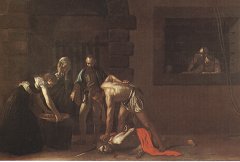 A flying visit to Portugal and
Malta
A flying visit to Portugal and
Malta
June 1999
As a serious change from me being the one to choose where to go for our holiday trips, Brian decided he would like to see Portugal and Malta – and he chose a 3-day ‘taster’ time in each country. The disadvantage was grim travelling hours from the other end of Cyprus (Larnaca) and tedious waits in both Malta and Barcelona Airports, which meant we arrived in Lisbon at midday, but without having had a decent nights’ sleep. We thought that we could spend the first day in a bit of simple orientation – finding out about trains, trams, buses and the underground system – where the centre of the city was, what the major sights were etc. After rather a lot of slow, heavy-footed walking we had found a number of cafes for coffee as well as loads of tourist brochures. (Hiring a car was out of the question as we are well aware that Portugal has the second highest road death-rate in Europe.) Back to the Hotel for an early dinner, a browse of the brochures and bed!
Lisbon is a very accessible city – it’s comparatively small with a population of about 700,000, the public transport is well used, cheap and efficient and the people are very friendly. We started our exploration with an Underground journey to the main Praca do Comercio – described as ‘the most elegant Square in the whole of Europe’. It would be … but for a general lack of neatness, a sad amount of litter, urine-corners and an almighty stage with 30ft. loudspeakers! A Rock Band was hammering out its practice noises, bass heavily in evidence so we wandered through to the next Square where there was an impromptu dance sequence celebrating centuries of Portugal’s romance with the sea. Two men wearing a ‘galleon’ rocked and rolled (sea style not Beatles!) around the square pursued by drummers with various sea animals on their heads and skeletal fish. Firecrackers and coloured smoke bombs, dancing lobsters and blue sea nymphs made up the rest of the cast. It was a pity there weren’t more spectators. A ride in an old, polished wooden tram took us to the Maritime Museum area where there is a vast statue to the heroic courage of all the Portuguese explorers and sailors. Carved in sandstone it faces out towards the mouth of the Tagus, a reminder of past achievements. Just along from that is the most photographed building in all Portugal – the Belem Tower a crenellated and ornate fortification that has sat in the sea for centuries. It was warm and sunny so we sat and watched the tourists and the River traffic for a while before walking to the Monastery of Jeronimos. This, we are told in the guide book, is a 16C Monastery built to commemorate the discovery of the sea route to India – of Manueline style and marvellous in construction as it survived the great earthquake of 1755. It’s exterior is highly photogenic and beside it is a Maritime Museum dedicated to (aforementioned) fearless Portuguese explorers and models of every boat ever made in Portugal, while on the walls, huge maps of the sea and land, showed what was then known.
The architecture all through Lisbon is attractive, a mixture of colonial, ornate, elegant and aged. The older style buildings riot with twists, turns, spirals and nautical designs, and its not difficult to find buildings with azulejos glazed tiles. (We were reminded of the 15C tiles on the outside of the Palace at Gwalior in India.) Back in the main part of Lisbon we climbed up through tortuous little cobbled streets and alleys to the castle of Sao Jorge. A typical fortified castle shape made of honey coloured sandstone and closed for the day as some Americans were making a film there starring Cameron Diaz. The views out over the city were wonderful – Church domes and spires, the Tagus and its scooting ferries, the huge red painted suspension bridge, the crammed housing and roofs of the old Afama district and above us a brilliant blue sky. We tried some Port – red and white and decided to buy some to take home, well, you have to here on its home territory! The day was tiring but it was nowhere near over yet!
In the imposing Praca do Comercio, later that night, was to be a free Concert and Fireworks display. We went for an unmemorable meal apart from the fact that we sat out on the pavement of the restaurant near a beggar with the most foul and hideous facial disfigurations – equally on a par with The Elephant Man - and watched the reactions of people walking by. Anyway, we had been told that the Concert started at 9.30 so were seated in back row seats by 9.00. Despite summer … it was freezing cold, the wind whistling across the Square so that Brian made a wrap of newspaper to try and keep a bit warm – we were still in our daytime T-shirts whereas the locals had turned up in their coats and anoraks. It got a bit better as the crowd thickened around the back of us! Three sopranos delighted us and the crowd with a mix of classical and Portuguese arias and songs. Then at 11.30 the Fireworks started. A great 8-gun Leviathan Fire Spouter lumbered round the Square pulsing out hot bursts of flames and igniting set pieces. Heavy modern music acted as a superb accompaniment and then the fireworks started. Huge mortar blasts sent coloured starbursts across the sky, each set piece greater and grander than the last, until we were exhausted by sheer spectacle and noise! That night we dropped gratefully into bed.
Next day we took the train out through the suburbs to a small delightful town in the forest-covered mountain of Sintra, 30Km from Lisbon, its beauty immortalized by Lord Byron who said that "The little town of Sintra is perhaps the most beautiful in the world." The great Portuguese playwright Gil Vincente called Sintra "an earthly Garden of Eden sent here by Solomon for a king of Portugal." Painters have also been captivated by its beautiful vistas and many palaces, churches and villas set in the hills, reflecting a combination of Moorish, Portuguese and Spanish influence.
The Palácio Nacional de Sintra sits in the middle of the Town with two enormous ‘oast-house’ shaped chimneys and is a beautiful mix of Moorish and Gothic architecture. The Palácio used to be a summer home for the Portuguese royal House of Avis, but today it is a museum open to the public with rooms full of deep blue and white 16C Azulejos tiles with charming depictions of local scenes and nature.

Another famous Sintra sight is Pena Castle, built in Gothic style high on a hill and looking much like a fairytale castle. The palace is surrounded by a beautiful park filled with a variety of trees and flowers brought from every corner of the Portuguese empire by Dom Fernando in the 1840's. You couldn’t help being struck by the vast amount of exquisite antique furniture and although the rooms were small, the palace was elegant and refined. Sintra still holds great charm for the visitor; it would be a good place to stay for a few days.
Our return was through the countryside on the bus, past the famous Racing Circuit at Estoril and through to Cascais (pronounced Cashcaish) A seaside playground for the hot and bored Lisbonite, full of tourist shops and Restaurants serving fresh fish. We got seriously tempted by the crayfish, lobsters, giant prawns, mussels and cockles that we saw, and put a delicious shellfish meal onto our expandable plastic card! Finally, back to Lisbon on the train again.
Two and a half days isn’t enough to feel that one has ‘seen’ anything more than a surface patina of a place but we both felt that Portugal had a lot more that we would like to see – some time in the future. But it’s not cheap any more!
On to Malta, after a boring Barcelona stop. (The whole trip we have been shadowed by a family from Cyprus. Plump and aged Granny, useless mother with 3 children, a quiet eldest daughter (8), a diabolical, noisy, irritating son with a stupid hairstyle (6) and small, dummy-sucking, petulant young daughter, and a long-suffering father who had to do everything .. including looking after the children.)
Malta Airport, and a long wait for the other people who were being ‘looked after’ by the same tour company there – it turned out to be the family from Cyprus! By the time they arrived through Customs we had organised ourselves with a neat little air-con car for the 3 days! Finding the Hotel proved quite difficult as the free road map is really more romantic than accurate and we were quite unprepared for Malta to be so built up and overcrowded. It fell to me to navigate and I must admit to only making a half-hearted attempt with such a feeble map, but it meant we drove aimlessly around never getting any closer to our Hotel for over an hour. Assistance appeared in the form of a lady, who seeing our dithering said, "Follow me" and drove us right up to the Hotel Entrance door! The Hotel Victoria has very comfortable facilities, including a roof top pool and café area, where we sat with a cool beer or two, as the sun went down.
In all the wanderings around
Valetta, Sliema, Swieqi, Gzira, Msida we were struck by the glorious colour of
the buildings. Malta hasn’t sold its soul to the Cement God as Cyprus has done
and much of the building work still uses local, naturally quarried sandstone.
It gives a golden, honey-coloured hue to the towns and villages. But it is
also very barren, in part due to the dryness of the island and partly as few
people have plants or trees around their houses. Even Gozo, which is deemed
‘green’ was hardly any different. The change tourism has made to Malta is
saddening as we felt that it now has no space for its own identity to show
through. Everywhere seemed tourist driven. The marvelously ancient area of
Valetta was thronging with people and cameras and the narrow roads were full
of noise. We bought a ‘What to see in Valetta’ map and followed its suggested
tour. The historic Palace of the Grand Masters where the Knights of St John
held court has an armoury which is now in the old stables and I was
disappointed with the armour that was on display. Since the disbanding in 1798
of the (by then) rather dissolute Knights, there has been a ‘severe
haemorrhage’ of their arms and armaments, leaving a fairly poor selection of
shields, pikes, helmets and cannons. The one piece of armour that is the
greatest treasure is the gold inlaid suit belonging to the Grand master Alof
de Wigancourt. In another room were hung some magnificent Gobelin tapestries
dating from 1697 – depicting deeds of valour and local scenes. The other 16C
building that is associated with the Knights is their St John’s Co Cathedral.
The interior is a blaze of colour and carved stone and by far the most
impressive thing I saw in Malta. Every Knight was bound by statute to give a
gift on his admission to the Order and this explains the sumptuous richness of
the interior. The painted ceiling looks down on a floor covered with 400
sepulchral slabs, each with elaborately worked marble marquetry. The High
Altar is made of lapis lazuli and other precious marble and the choir stalls
are all gilded. The various chapels that line the main Cathedral have ornately
carved marble altars and religious lunettes. And then you go into the Oratory
to see the two recently restored Caravaggio’s, the ‘Beheading of St John’ and
a painting of St Jerome. Two quite awesome pictures!
The various chapels that line the main Cathedral have ornately
carved marble altars and religious lunettes. And then you go into the Oratory
to see the two recently restored Caravaggio’s, the ‘Beheading of St John’ and
a painting of St Jerome. Two quite awesome pictures!
Two other things that I am glad to
have seen are the capital of Malta in medieval times – the aptly named ‘Silent
City’ of Mdina. Fortified golden sandstone on the outside and inside walls
with few windows. Narrow alleys, rather than roads and a feeling of quiet
meditation throughout the city. Its dignity and age defied the tourists and
even the ‘crafts’ shops were well tucked into the walls. The evening tolling
of bells lent it all an air of sombreness. . And finally, the huge stone
bastions and curtains that defended the Island from sea invasions through the
centuries; I could stand and marvel at the ingenuity with which they had been
planned, fashioned and built.
In looking at what I’ve written, I obviously enjoyed both Lisbon and Malta but I don’t think I’d make time to go back to Malta again. I got awfully troubled and worried about safe disposal of all the sewage produced by so many people, I don’t think I could have gone swimming in the water around the island, even if the beaches had been more tempting. The beaches in Portugal were much nicer to look at but I wouldn’t have gone swimming there either because it’s the cold Atlantic! But I might go back to Portugal to see its rural parts.